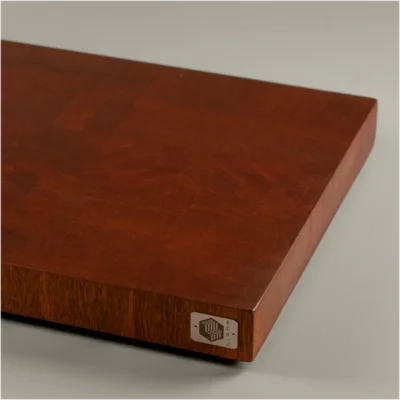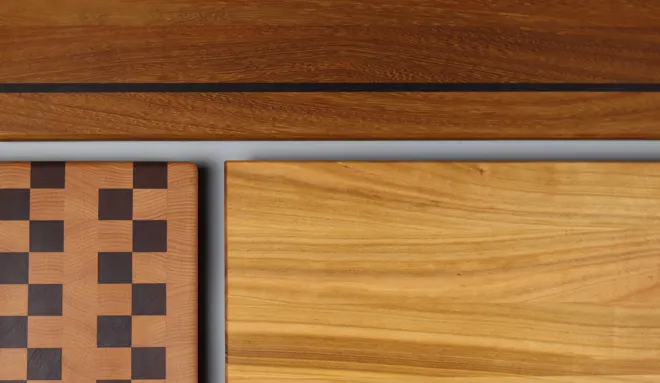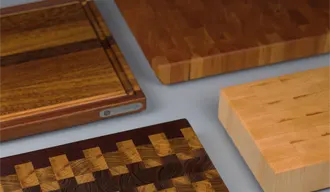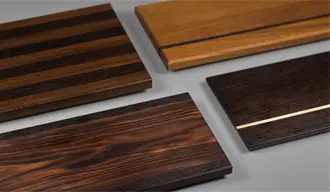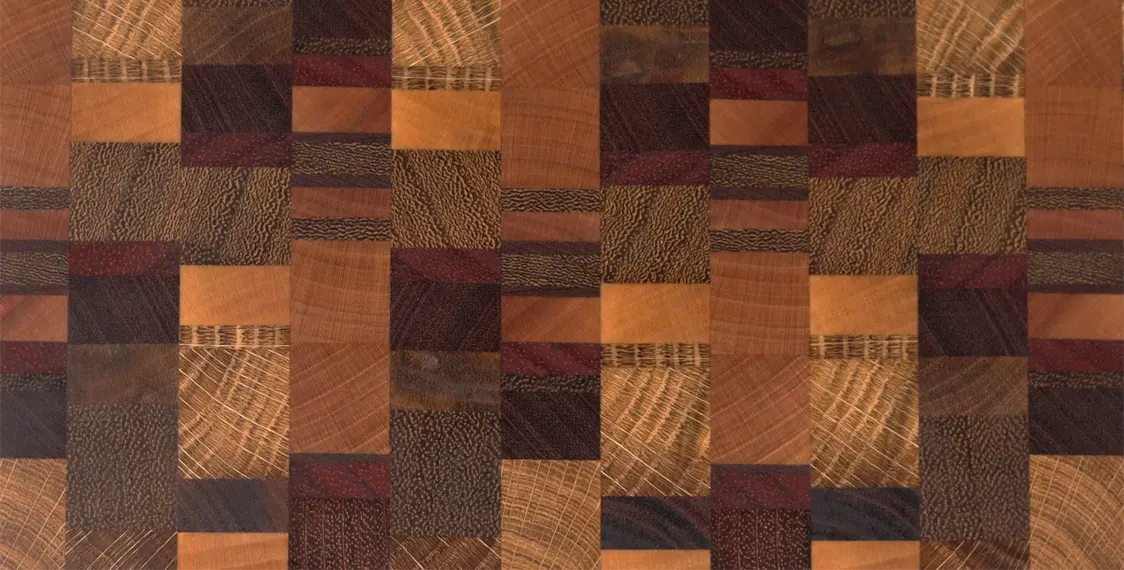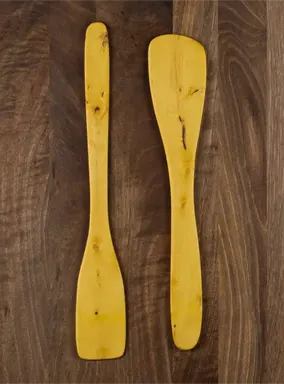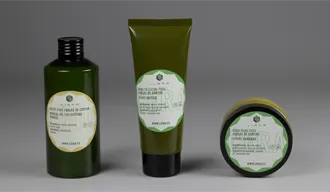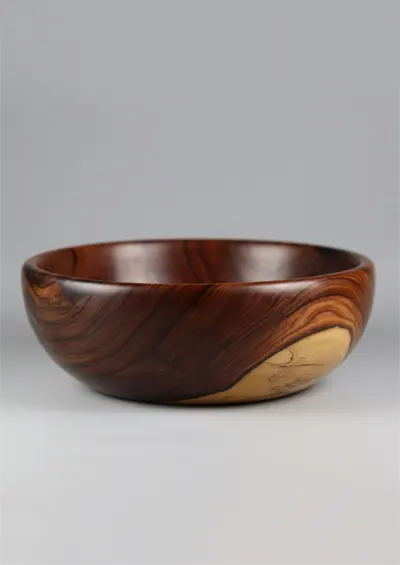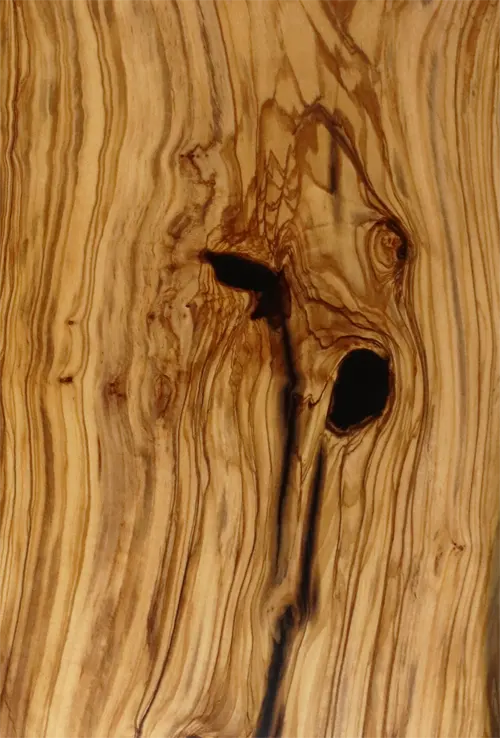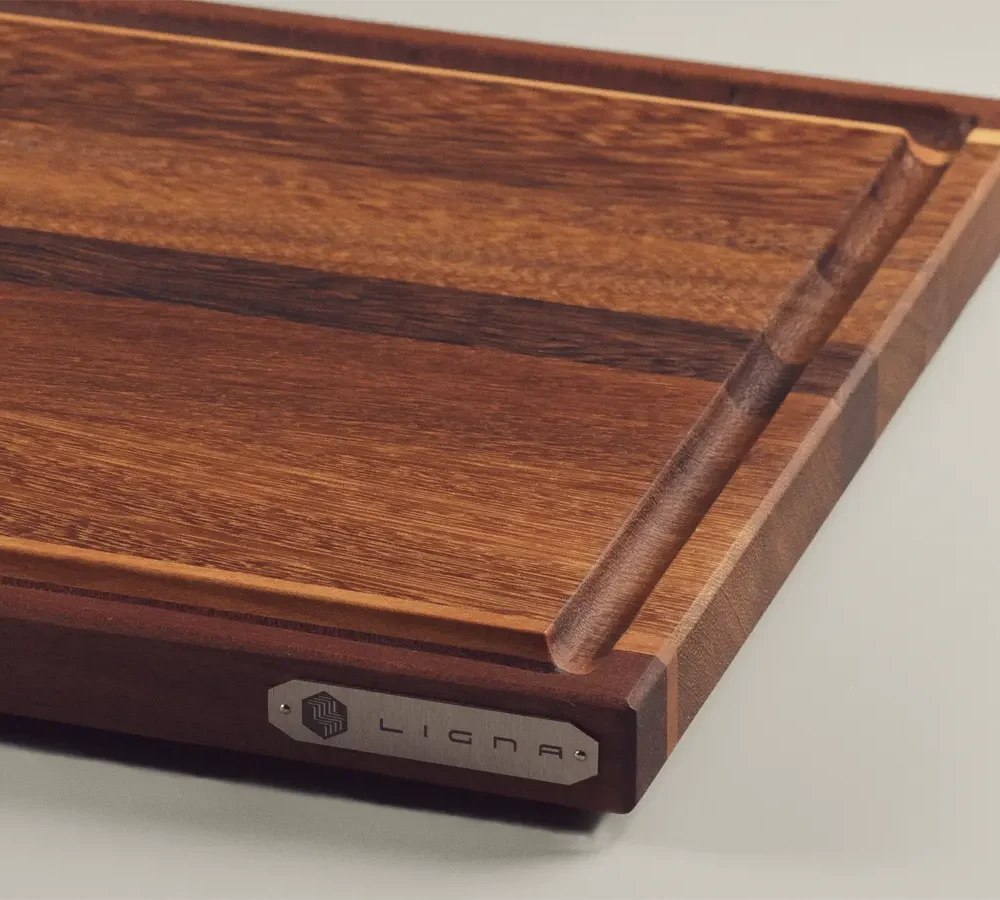Sucupira Wood: Uses and Characteristics
Sucupira wood is known for its durability and strength, making it an excellent choice for a variety of applications, including flooring, furniture and cutting boards.
This tropical wood, extracted from trees of the genus Diplotropis y Bowdichiais prized for its hardness, dark color and distinctive grain.
Below, we explore in detail the characteristics and most common uses of sucupira wood.
What is Sucupira Wood?
Sucupira wood comes from trees native to the tropical regions of South America, mainly in Brazil.
It is a hardwood, ranging in tone from dark brown to reddish brown, often with contrasting grain that gives it an attractive appearance.
Due to its high strength and durability, it is commonly used in applications that require a robust wood capable of withstanding intensive use.
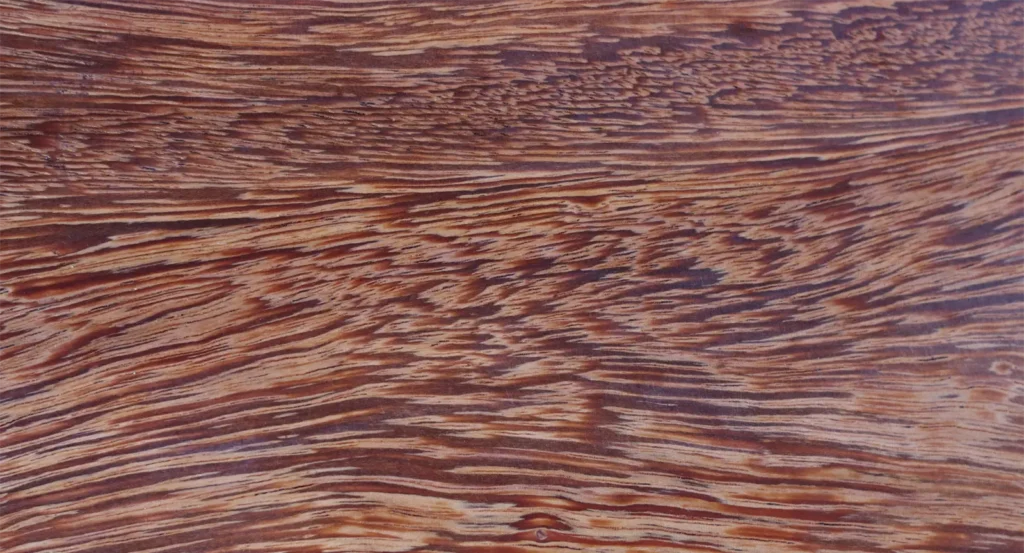
Sucupira Wood Properties
Hardness and Density
Sucupira is an extremely dense and hard wood, with an average density of 850 to 950 kg/m³, making it one of the most resistant woods available on the market. This hardness makes it ideal for applications such as flooring and high-traffic surfaces, as it can withstand constant wear and tear.
Durability
Thanks to its natural resistance to fungi, insects and decay, sucupira wood has great durability even in adverse conditions. It is able to withstand humid climates and temperature changes, making it suitable for both indoors and outdoors.
Aesthetic Appearance
Its dark, rich color, ranging from chocolate brown to reddish tones, along with its interlocked or straight grain, make it a visually appealing wood. This makes it popular in projects where aesthetics are as important as functionality.
Dimensional Stability
Sucupira has moderate dimensional stability, which means that it is relatively resistant to warping and shrinkage, especially when dried and properly treated prior to use.
Technical characteristics of sucupira wood
| Property | Value |
|---|---|
| Scientific name | Diplotropis purpurea |
| Botanical family | Fabaceae |
| Origin | South America (Brazil, Colombia, Venezuela, Guyana) |
| Heartwood color | Dark brown to reddish |
| Sapwood color | Grayish white to yellowish white |
| Fiber | Straight, often interlaced |
| Grain | Half |
| Texture | Medium to thick |
| Density at 12% humidity | 910 kg/m³ (very heavy wood) |
| Hardness (Chalais-Meudon) | 8.3 (very hard wood) |
| Janka hardness | 13.610 N (3.060 lbf) |
| Dimensional stability | Volumetric shrinkage coefficient: 0.44%; T/R ratio: 1.5 |
| Static flexural strength | 1.400 kg/cm² |
| Modulus of elasticity | 180.000 kg/cm² |
| Compressive strength | 850 kg/cm² |
| Natural durability | High resistance to fungi and insects |
| Impregnability | Sapwood: moderately impregnable; Heartwood: not impregnable |
| Drying process | Medium to slow; risk of deformations and cracks |
| Workability | Difficult due to its hardness and intertwined grain; requires sharp tools and pre-drills |
| Finish | Good after applying sealants; may show peeling without proper treatment |
| Common uses | Flooring, high-end furniture, interior and exterior carpentry, decorative veneers, stairs, moldings, friezes, turnings, shipbuilding |
Uses of Sucupira Wood
Wood Flooring
One of the most common uses of sucupira is in heavy-duty flooring. Its density and durability make it ideal for floors that must withstand constant and demanding traffic, such as those in commercial and residential areas. In addition, its dark color adds an elegant and sophisticated touch to spaces.
Cutting Boards and Kitchen Utensils
Because of its high density and resistance to cutting, sucupira wood is an excellent choice for cutting boards and kitchen utensils. Its natural resistance to damage and low porosity help maintain hygiene, making it a safe and durable choice for food contact.
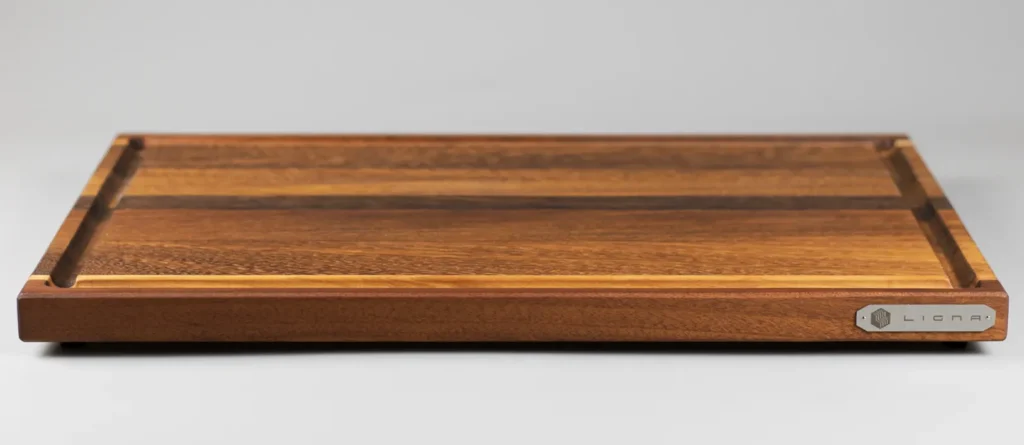
Exterior carpentry
Because of its weather resistance, sucupira is also used in exterior joinery, such as doors, windows and siding. Its ability to withstand inclement weather without deteriorating makes it ideal for exterior projects, where a wood that does not require a lot of maintenance is needed.
Sucupira Wood Advantages and Considerations
Advantages
- Highly resistant and durable: Sucupira is one of the hardest woods, which makes it ideal for applications that need to withstand intensive and constant use.
- Moisture and pest resistance: This wood is naturally resistant to moisture, fungi and insects, reducing the need for additional treatments.
- Attractive appearance: Its dark color and striking grain make it perfect for furniture and floors that require an elegant and durable touch.
Considerations
- Difficult to work with: Due to its high density, sucupira can be difficult to cut and shape, which can require specialized tools and increase labor costs.
- Medium-high price: Although it is more accessible than other exotic woods, the price of sucupira can be high due to its durability and the quality it offers in projects. In addition, it is difficult to find it in plank format, since its main use is for flooring and it is sold in standard formats for this purpose.
Conclusion
Sucupira wood is an interesting option to include in your cutting boards. Its extraordinary grain is reserved for small details so as not to saturate the aesthetics of the board.
Whether for flooring, furniture or cutting boards, this wood offers a robust and visually appealing solution that can stand the test of time even in demanding conditions. While its cost and difficulty to work with can be a challenge, its performance and longevity make it a valuable investment for high-end projects.
Our products with Sucupira wood
-
 Chroma
Chromalarge carving board
Price range: € 180,00 through € 200,00
Frequently asked questions about sucupira wood
What is sucupira wood and where does it come from?
Sucupira wood comes from the Diplotropis purpurea tree, native to South America, especially countries like Brazil, Colombia, and Venezuela. It is known for its durability, dark hues, and strength, making it ideal for demanding carpentry and cabinetmaking applications.
What are the physical properties of sucupira wood?
It is a very heavy wood, with an approximate density of 910 kg/m³ at 12% moisture content. It has a Chaláis-Meudon hardness of 8.3 and a Janka hardness of 13,610 N, classifying it as a very hard wood. It has good dimensional stability, with a volumetric shrinkage coefficient of 0.44%.
What is sucupira wood used for?
It is used in the manufacture of high-traffic flooring, high-end furniture, interior and exterior carpentry, decorative veneers, staircases, moldings, friezes, turnings, and shipbuilding, thanks to its durability and attractive aesthetics.
Is sucupira wood suitable for outdoors?
Yes, due to its high resistance to moisture and insects, sucupira wood is suitable for exterior applications such as doors, windows, and siding. However, protective treatments are recommended to prolong its durability in very humid environments.
What is the color of sucupira wood?
The heartwood ranges in color from dark brown to a reddish hue, while the sapwood is grayish white to yellowish white. Over time and with exposure to light, the color may darken, acquiring a deep, elegant patina.
Is it easy to work sucupira wood?
No, sucupira wood is difficult to work due to its high density and intertwined grain. Sawing and planing can be difficult, so the use of sharp tools and pre-drilling for nails and screws is recommended.
Is sucupira wood resistant to insects?
Yes, sucupira wood has a high natural resistance to fungi and insects, making it suitable for various applications without the need for additional chemical treatments.
What care does sucupira wood require?
Applying protective finishes, such as sealers or varnishes, is recommended to maintain its appearance and durability, especially in outdoor applications or in environments with high humidity. It’s also important to avoid contact with iron objects to prevent staining of the wood.
How does humidity affect sucupira wood?
Sucupira wood has good dimensional stability, with a volumetric shrinkage coefficient of 0.44% and a radial to tangential shrinkage ratio of 1.5, making it resistant to deformations caused by changes in humidity.
Is sucupira wood sustainable?
The sustainability of sucupira wood depends on its origin and forest management practices. It’s important to ensure it comes from responsible and certified sources to ensure its sustainability and minimize its environmental impact.
Otras entradas del blog
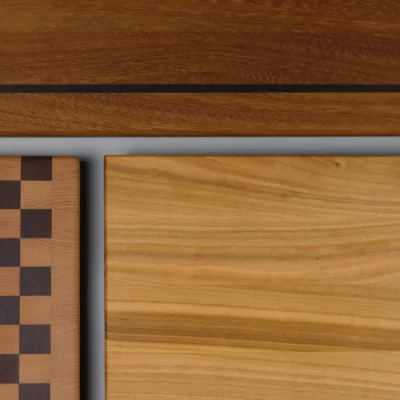
Do I need a hardwood for a cutting board?
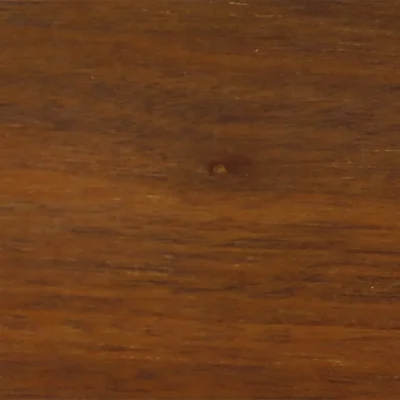
Outdoor wood: a complete guide
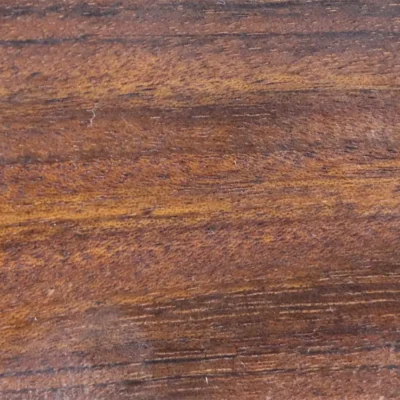
Mongoy Wood: Uses and Characteristics

Ebony Wood: Complete Guide
Nuestras tablas de cortar:
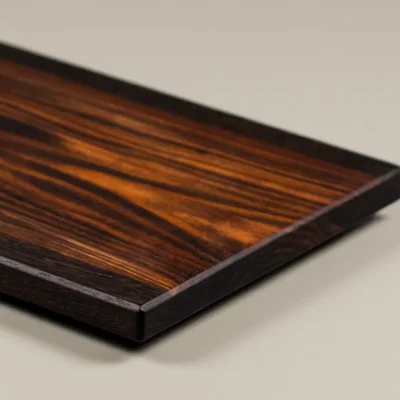
NUBILA
wooden cheese board
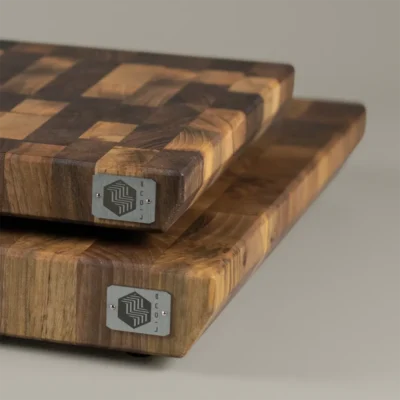
Pura
Walnut walnut butcher block
Pura
Walnutwalnut butcher block
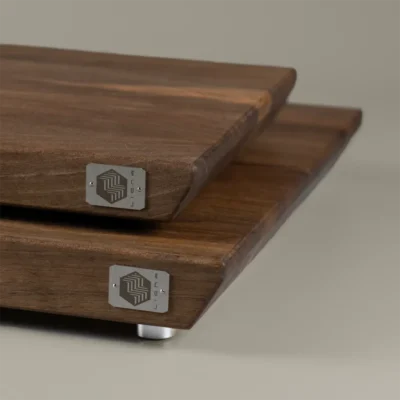
Linea
Walnut Walnut cutting board
Linea
WalnutWalnut cutting board
